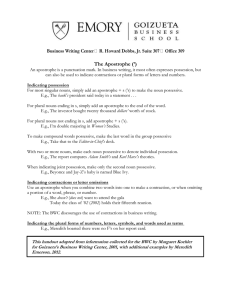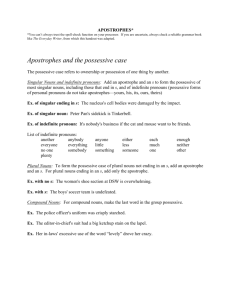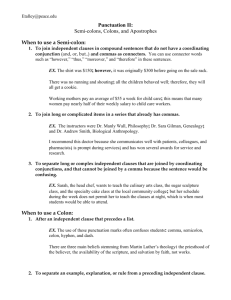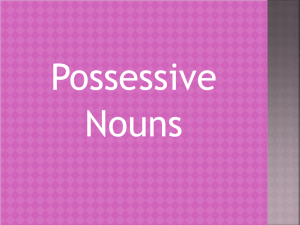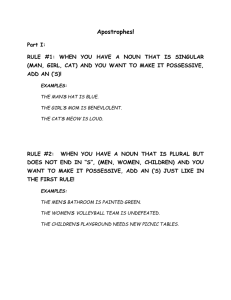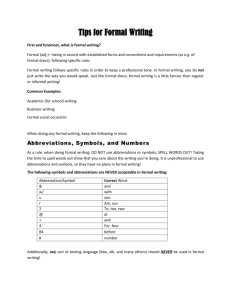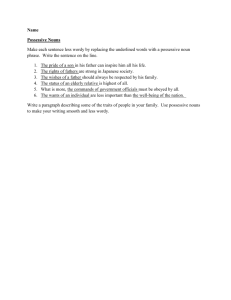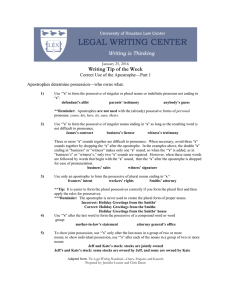APOSTROPHES*
advertisement
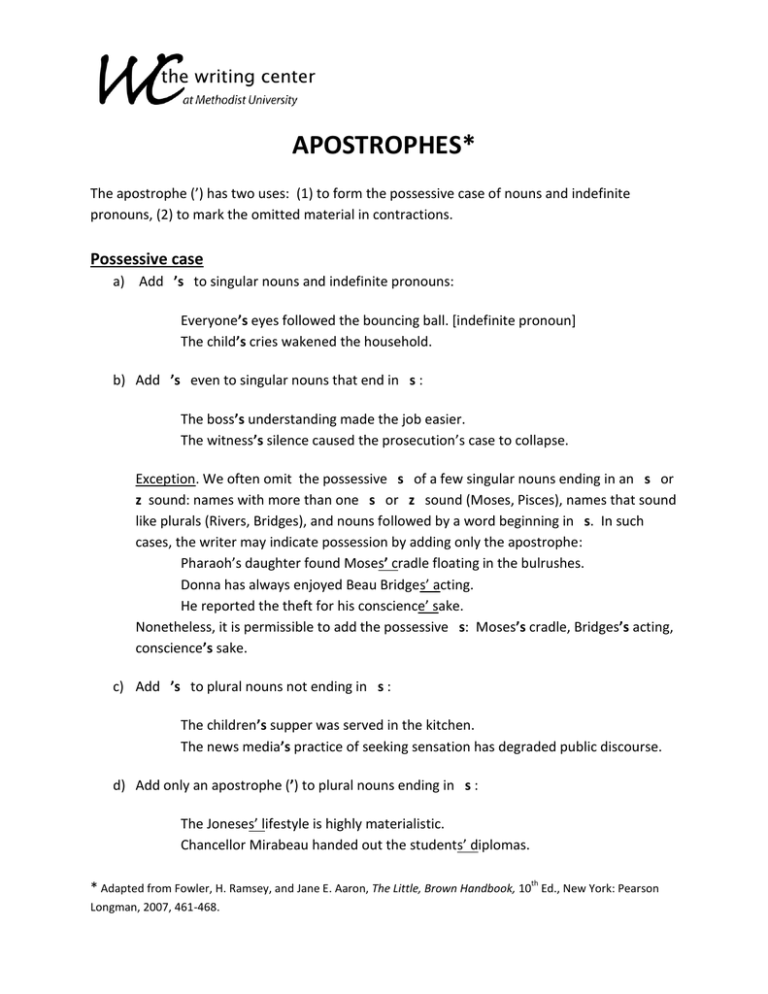
APOSTROPHES* The apostrophe (’) has two uses: (1) to form the possessive case of nouns and indefinite pronouns, (2) to mark the omitted material in contractions. Possessive case a) Add ’s to singular nouns and indefinite pronouns: Everyone’s eyes followed the bouncing ball. [indefinite pronoun] The child’s cries wakened the household. b) Add ’s even to singular nouns that end in s : The boss’s understanding made the job easier. The witness’s silence caused the prosecution’s case to collapse. Exception. We often omit the possessive s of a few singular nouns ending in an s or z sound: names with more than one s or z sound (Moses, Pisces), names that sound like plurals (Rivers, Bridges), and nouns followed by a word beginning in s. In such cases, the writer may indicate possession by adding only the apostrophe: Pharaoh’s daughter found Moses’ cradle floating in the bulrushes. Donna has always enjoyed Beau Bridges’ acting. He reported the theft for his conscience’ sake. Nonetheless, it is permissible to add the possessive s: Moses’s cradle, Bridges’s acting, conscience’s sake. c) Add ’s to plural nouns not ending in s : The children’s supper was served in the kitchen. The news media’s practice of seeking sensation has degraded public discourse. d) Add only an apostrophe (’) to plural nouns ending in s : The Joneses’ lifestyle is highly materialistic. Chancellor Mirabeau handed out the students’ diplomas. * Adapted from Fowler, H. Ramsey, and Jane E. Aaron, The Little, Brown Handbook, 10th Ed., New York: Pearson Longman, 2007, 461-468. NOTE 1: The apostrophe or apostrophe+s for the possessive is an addition to the word naming the owner or owners. Thus, “the banner belonging to the girls” becomes ”the girls’ banner,” not “the girl’s banner.” NOTE 2: Do not use an apostrophe to form the possessive of a personal pronoun. Thus, “the color of the sweater” becomes “its color,” not “it’s color,” and “the book belongs to you” becomes “the book is yours,” not “the book is your’s.” NOTE 3: Do not use an apostrophe to form the plural of a noun. Thus, “the Smiths drove both cars to the game,” not “the Smith’s drove both car’s to the game.” Contractions An apostrophe indicates a dropped syllable or “contraction” in spoken English, for example, class of ’13 (class of 2013) and don’t (do not). Contractions are generally not used in academic writing but may be used in informal writing and in written dialogue. Examples of common contractions follow: It is, it has it’s does not doesn’t Who is, who has who’s were not weren’t They are they’re would not wouldn’t You are you’re of the clock o’clock CAVEAT: Contractions may be confused with possessive pronouns. Take note of the differences: Contraction Possessive Pronoun it’s (it is) its they’re (they are) their you’re (you are) your who’s (who is, who has) whose Not Plurals It was once common – but is no longer desirable – to include an apostrophe in forming the plural of abbreviations, dates, and words or characters named as words: Former practice Preferred practice BA’s BAs 1980’s 1980s C’s Cs no if’s, and’s, or but’s no ifs, ands, or buts

